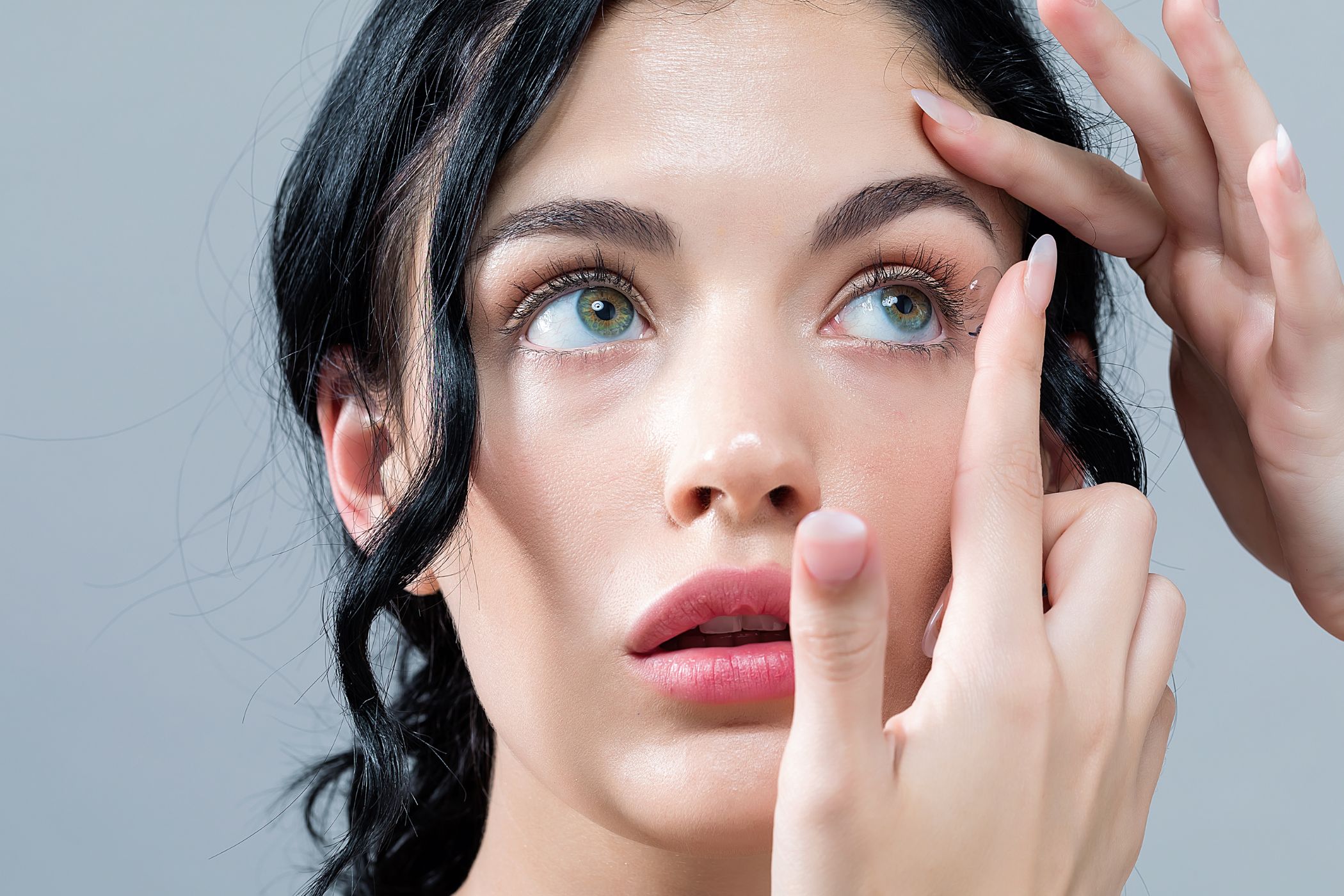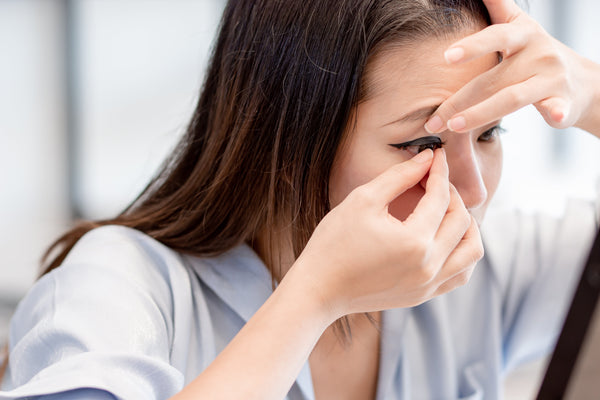
Whether your eyes are watering in the bright sunshine or you’re shedding a tear over a sad episode of your favourite TV show, we’re all familiar with tears. But rather than just being a way our bodies express emotion, did you know that tears play a vital part in your eye health?
Your eyes produce tears constantly and they help to keep them nourished and hydrated, clear away dust and debris, and help protect your eye from infection. But when your eyes don’t produce enough tears, or your tears aren’t of good enough quality, this is called dry eye syndrome. It can be uncomfortable and scratchy, making wearing contact lenses less comfortable. But it’s not impossible to wear contacts with dry eyes – some types of contact lenses can help to alleviate the discomfort of wearing lenses with dry eyes. Read on to learn more.
Can you wear contact lenses with dry eyes?
Dry eyes happen when your eyes don’t produce tears of a good enough quality or quantity to provide the right amount of lubrication to your eyes. It can be uncomfortable and annoying to live with and even if you have very watery eyes, you could still technically have dry eye syndrome.

Common symptoms of dry eye include:
- A stinging or burning sensation
- A gritty feeling in your eye
- Stringy mucus near the eyes
- Redness
- Light sensitivity
- Watery eyes
- Blurred vision
- Difficulty with night driving
You may think that dry eyes will stop you from wearing contact lenses. However, you can still wear some types of lenses comfortably, even with dry eye symptoms. Book a dry eye test today if you suspect you have the condition or are experiencing any of the above symptoms.
Are daily or monthly contact lenses better for dry eyes
Finding the right type of contact lenses to work for your eyes is a personal journey that your optometrist can help with. As there are good options for the various types of contact lenses, choosing whether to opt for daily or monthly lenses will also depend on your preferences and lifestyle.
That being said, daily contact lenses are our recommendation as they have less opportunity to collect dust and debris and can be more comfortable on dry eyes. They are also specially made to be as comfortable as possible and have some impressive technology and innovation behind them so are a great choice for ensuring your eyes stay hydrated and irritation-free with a new fresh lens every day.
What are the best contact lenses for dry eye syndrome?
The best contact lenses for dry eye syndrome will be different for everyone, as everyone’s eyes are different. Therefore, it may be a case of trial and error with your optometrist before you find the perfect contact lens material to work with your eyes. Lens-wearing comfort is a priority for contact lens manufacturers, and there are many materials and lens designs aimed at giving the most comfortable experience.

Dailies Total 1
Made with a special water gradient design, the Total 1 daily contact lenses are almost 100% water on the outside to reduce friction and increase hydration in your eye. So you can enjoy a fresh and irritation-free feeling for up to 16 hours of wear.
1 Day Oasys
1 Day Oasys are ideal for those with dry eyes. They use a specially designed HydraLuxe Technology, which uses a coating around the lens surface to create a tear-like network throughout each lens – this helps your natural tears maintain their moisture while you wear them, ensuring your eyes stay hydrated and feel fresh throughout the day.
1 Day Acuvue Moist
These daily lenses are great for dry or sensitive eyes. They’re made from a type of hydrogel material that is ultra comfortable and breathable. A special wetting agent inspired by the eyes’ tears helps lock in moisture and keep your vision clear. Their unique moisture cushion keeps your eyes free from irritation all day.
Tips for wearing contact lenses with dry eyes
Dry eye is a common problem, especially in modern working environments where you may be using computers for long periods of time. Here are some tips for wearing contact lenses with dry eyes:
- Use eye drops to lubricate your eyes and relieve discomfort.
- Maintain good lens hygiene and never touch your eyes without thoroughly washing your hands first.
- Change to a fresh pair of lenses as directed.
- Go lens-free for a few hours a day and take longer breaks if your eyes feel extra dry.
- Never sleep with your lenses in.
- Limit screen time – we blink less often when looking at screens which can dry out our eyes even more so it’s best to have regular breaks from screens and use the 20:20:20 rule, looking away from the screen regularly, to focus on a distant object and blinking frequently.
- Keep hydrated and drink plenty of fluids combined with a healthy diet, including Omega 3.
- If you’re a make up wearer, try not to put make-up on the eyelid margins where the Meibomiam oil glands are. The makeup can block some of these glands and this can contribute to dry eyes.
- Try to make sure heaters and fans are not directed straight towards you. This will help tear layer evaporation and contribute to dry eyes.
Having dry eyes can be uncomfortable but it doesn’t mean you have to give up wearing contact lenses if those are your preferred method of vision correction. Instead, you can make some adjustments to the lenses you do wear and make sure you’re taking plenty of breaks from wearing them, using eye drops, and making sure you keep up good contact lens hygiene.








